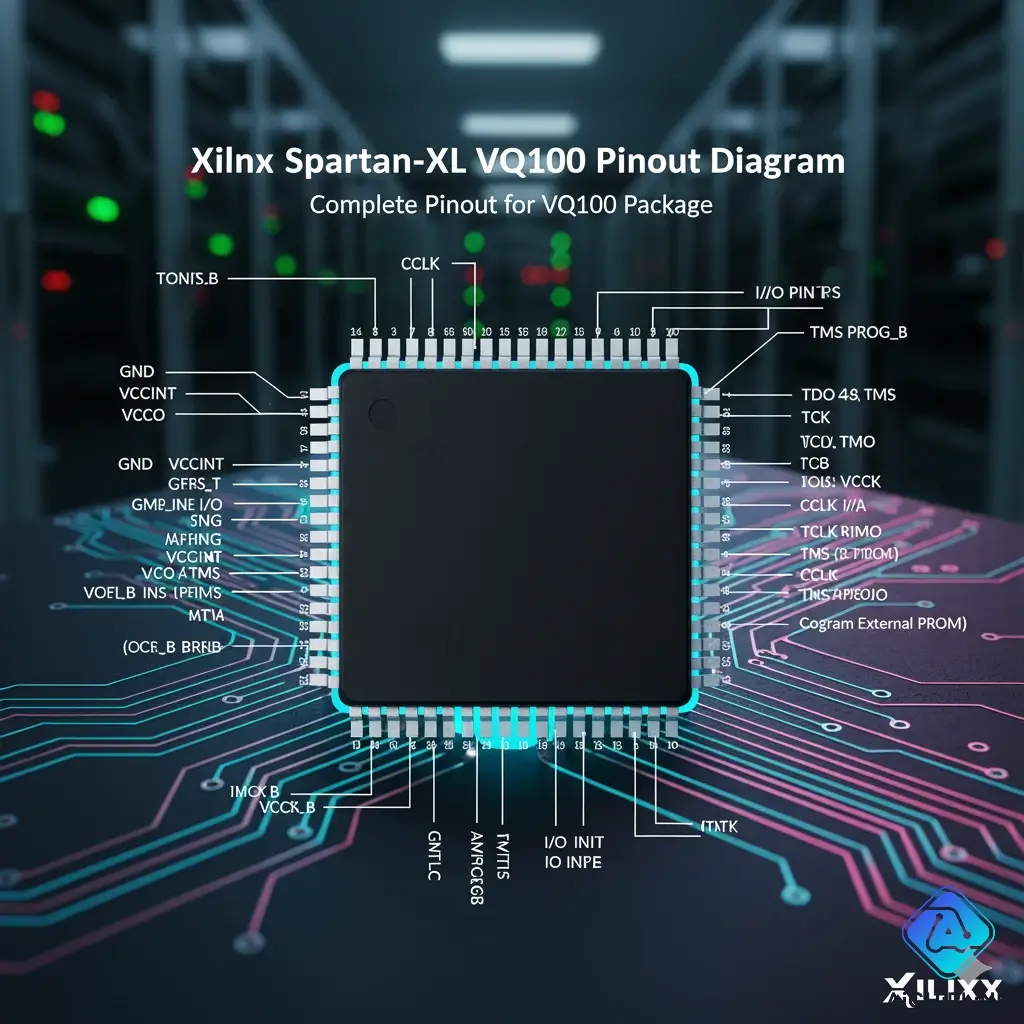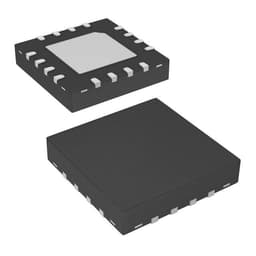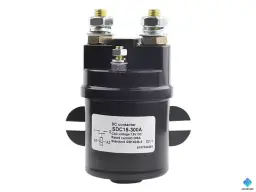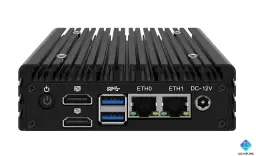
Table of Contents
- 1.0 What is the XCS10XL-4VQ100C FPGA?
- 1.1 An Overview of the Xilinx Spartan-XL Family
- 1.2 Decoding the Part Number: XCS10XL-4VQ100C
- 1.3 Key Features from the Datasheet
- 2.0 XCS10XL-4VQ100C Key Technical Specifications
- 2.1 Logic, Gates, and Memory Specs
- 2.2 I/O, Package, and 5V Tolerant Details
- 3.0 XCS10XL-4VQ100C Pinout (VQ100 Package)
- 3.1 VQ100 Package Pin Diagram
- 3.2 Key Pin Functions: Power, JTAG, and Configuration
- 4.0 Applications, Programming, and Obsolescence
- 4.1 Common Legacy Applications
- 4.2 How to Program the XCS10XL-4VQ100C
- 4.3 Required Software: The Xilinx ISE
- 4.4 Status in 2025: Obsolescence and Replacement
- 5.0 Frequently Asked Questions (FAQ)
Ever opened a piece of trusty, decade-old industrial equipment and found a chip you can't identify? That's a common scenario for engineers dealing with legacy systems, and a frequent star of this story is the FPGA XCS10XL-4VQ100C Device. While new designs grab headlines with multi-million-gate FPGAs, the market for maintaining legacy industrial systems is massive, with billions of dollars spent annually on MRO (Maintenance, Repair, and Operations). In 2025, this FPGA isn't a chip for a new project; it's a critical replacement part needed to keep essential machinery online.
You're not looking for a sales pitch; you're a professional engineer or technician who needs hard data. This guide is your technical deep-dive. It's for the person who needs to understand, test, or replace this specific chip today. We'll break down its core specs, pinout, programming requirements, and its status in the modern electronics landscape.
1.0 What is the XCS10XL-4VQ100C FPGA?
The XCS10XL-4VQ100C is a legacy Field-Programmable Gate Array (FPGA) from the Xilinx Spartan-XL family. Think of it as a veteran "glue logic" specialist. It's an SRAM-based chip, meaning its configuration is volatile and must be loaded from an external source every time the system powers up.
Its entire purpose was to provide a cost-effective way for designers to replace dozens of smaller logic chips (like 74-series logic) with a single, reconfigurable component.
1.1 An Overview of the Xilinx Spartan-XL Family
The Spartan-XL family was an enhancement of the original Spartan series. It was revolutionary for its time, offering a high-volume, low-cost FPGA solution for designs that didn't need the power of the high-end Virtex line.
- It was one of the first accessible FPGA families for engineers moving away from CPLDs.
- It brought together a flexible logic structure with on-chip RAM.
- It established a foundation that later, more powerful Spartan families would build upon.
1.2 Decoding the Part Number: XCS10XL-4VQ100C
As an engineer, you know the part number tells a story. Here's the translation:
- XCS10XL: This is the base device. "XCS" identifies it as a Spartan-XL, and "10" denotes its logic capacity—approximately 10,000 system gates.
- -4: This is the speed grade. A -4 is a standard commercial speed grade.
- VQ100: This is the package. "VQ" stands for Very Thin Quad Flat Pack, and "100" means it has 100 pins.
- C: This is the temperature grade. "C" stands for Commercial, with an operating range of 0°C to 85°C.
1.3 Key Features from the Datasheet
This chip was popular for a few key reasons that are critical to know if you're replacing it:
- 3.3V Core with 5V Tolerant I/O: This is perhaps its most important feature. The chip itself runs on 3.3V, but its input pins can accept 5V signals without being damaged. This made it the perfect bridge between modern 3.3V microprocessors and older 5V peripherals.
- SRAM-Based Configuration: It must be configured at power-up, typically from a serial PROM (like the Xilinx XC17S00XL series) or by a host microcontroller.
- Dedicated BlockRAM: It includes 20,480 bits of on-chip, dual-port BlockRAM, which was a significant feature for implementing buffers and small FIFOs without using up logic cells.
- Flexible Logic: The core is built from 466 Configurable Logic Blocks (CLBs).
2.0 XCS10XL-4VQ100C Key Technical Specifications
When you're sourcing a replacement, matching the XCS10XL specs is everything. Here is the technical data you need, straight from the legacy datasheets.
2.1 Logic, Gates, and Memory Specs
The main value of an FPGA is its logic. The XCS10XL-4VQ100C provides a respectable amount for its era, making it ideal for consolidating parallel logic tasks.
| Specification | Value |
|---|---|
| Device Family | Spartan-XL |
| System Gates | 10,000 |
| Logic Cells | 1,862 |
| Configurable Logic Blocks (CLBs) | 466 (2x2 matrix) |
| Total Flip-Flops | 1,296 |
| BlockRAM (bits) | 20,480 (10 blocks of 2,048) |
| Distributed RAM (bits)** | 18,640 (using CLBs as RAM) |
2.2 I/O, Package, and 5V Tolerant Details
For a "glue logic" chip, I/O is just as important as logic.
- Package: VQ100 (100-pin Very Thin Quad Flat Pack)
- Max User I/O: 77 pins
- Core Voltage (VCCINT): 3.3V (nominal)
- I/O Voltage (VCCO): 3.3V (nominal)
- 5V Tolerant Inputs: Yes. This is a critical feature for interfacing with 5V TTL logic.
Expert Note: The 5V tolerant I/O is a lifesaver in legacy 5V systems. You can directly connect a 5V microcontroller's output to this FPGA's input without any level-shifting chips. However, the outputs are 3.3V, so you may need a level translator when driving 5V TTL inputs.
3.0 XCS10XL-4VQ100C Pinout (VQ100 Package)
When you're probing a dead board or designing a replacement, the XCS10XL pinout is your map. You cannot swap this chip with anything else unless the pinout is an exact match, which is highly unlikely.
3.1 VQ100 Package Pin Diagram
The VQ100 is a 100-pin, square package with 25 pins per side. Pin 1 is marked by a dot on the chip's body. The pin numbering proceeds counter-clockwise.

3.2 Key Pin Functions: Power, JTAG, and Configuration
While you must consult the full datasheet for your specific board, here are the non-negotiable pins you need to check:
- Power (VCCINT): These pins (e.g., 10, 23, 41, 61, 74, 92) must all receive regulated 3.3V.
- Ground (GND): All ground pins must have a solid connection to the ground plane.
- I/O Banks (VCCO): The VQ100 package has four separate I/O banks, one on each side. Each bank's VCCO pins must be powered (typically at 3.3V) for its I/O to function.
- Configuration (JTAG): The JTAG pins (TDI, TDO, TCK, TMS) are essential for programming and debugging. If a system is failing, these are the first pins to probe with a JTAG programmer.
- Configuration Mode (M0, M1, M2): These pins are hard-wired on the PCB to set how the FPGA boots (e.g., from a serial PROM or as a slave to a CPU).
4.0 Applications, Programming, and Obsolescence
This is where the "rubber meets the road" for a legacy part. Why was it used, and what do you do with it now?
4.1 Common Legacy Applications
You won't find this chip in a new smartphone. You will find it in equipment that was built to last 20+ years, such as:
- Industrial Automation: As the main controller in a PLC or a motor control drive.
- Telecommunications: In older line cards, base station controllers, or networking hardware.
- Test & Measurement: As the logic core for oscilloscopes, logic analyzers, and function generators from the late 90s/early 2000s.
- Medical Devices: In non-critical patient monitoring or lab equipment that has a long validation cycle.
4.2 How to Program the XCS10XL-4VQ100C
Here is the "How-To" section you need. Programming this legacy FPGA requires a specific set of tools and knowledge.
- Get the Right Software: You cannot use modern Xilinx Vivado. You must find and install the legacy Xilinx ISE (Integrated Software Environment), typically version 10.1 or even earlier, to have full support for the Spartan-XL family.
- Get the Right Hardware: You need a compatible JTAG programming cable. The modern Xilinx Platform Cable USB II (the black one) may work with older ISE versions, but the classic Platform Cable USB (the red one) is a safer bet.
- Design & Compile: Create your project in ISE (using VHDL or Verilog). Assign the device as
XCS10XLand the package asVQ100. - Generate File: Compile your design to generate a
.bitfile (for SRAM loading) or a.mcsfile (to program a PROM). - Configure: Use the "iMPACT" tool within ISE to connect to the JTAG chain and load the
.bitfile onto the FPGA.
4.3 Required Software: The Xilinx ISE
I want to emphasize this: modern tools will not work. The Xilinx ISE is the only software suite that contains the correct device models and compilation algorithms for the Spartan-XL family. You will likely need to run this on an older OS or in a virtual machine (like Windows XP or Windows 7 32-bit) for full compatibility.
For a visual guide on what the Xilinx ISE software looks like, this tutorial for the Spartan-3 (a newer-but-still-legacy family) gives a great feel for the workflow you'll be using.
4.4 Status in 2025: Obsolescence and Replacement
Let's be clear: the XCS10XL-4VQ100C is completely obsolete. It is Not Recommended for New Designs (NRND). However, this has created a critical aftermarket for MRO.
| Challenge | Best Solution |
|---|---|
| Simple Repair | Direct Replacement. Source an identical XCS10XL-4VQ100C. This is the only way to avoid a full board redesign. |
| System Redesign | Migrate to a Modern FPGA. This is a major engineering task. A modern Spartan-7 or Artix-7 chip is thousands of times more powerful, but it is not pin-compatible and requires a new PCB and design. |
| Design Porting | You must manually port the old VHDL/Verilog code from ISE to the new Vivado software, which can be complex. |

Conclusion: A Legacy Workhorse That Still Matters
While the FPGA XCS10XL-4VQ100C Device isn't destined for your next high-speed, AI-powered gadget, it remains a pillar of modern industrial infrastructure. Its role has shifted from innovation to sustainment. As a component specialist, I can tell you that the skills to manage, test, and source these legacy FPGAs are becoming more valuable, not less, as critical systems age. This chip is a reminder that in the world of electronics, "obsolete" doesn't mean "unimportant."
If you're facing a production halt, a line-down situation, or a critical repair because you can't find this specific part, you don't need a catalog—you need a specialist. Contact AichipLink today. Our expertise is in sourcing hard-to-find and obsolete components like the XCS10XL. Let us help you keep your essential systems running.
Frequently Asked Questions
What is the XCS10XL-4VQ100C?
The XCS10XL-4VQ100C is a legacy **FPGA** from the Xilinx Spartan-XL family. It features 10,000 system gates, 466 CLBs, and 77 user I/O pins in a 100-pin VQFP package. It is a 3.3V device but has **5V tolerant inputs**.
Is the XCS10XL-4VQ100C obsolete?
Yes, the Xilinx Spartan-XL family is a legacy/obsolete product line. It is **Not Recommended for New Designs (NRND)**. It is primarily used for maintenance and repair of existing equipment that has a long product lifecycle.
What software is used to program the XCS10XL-4VQ100C?
You must use the legacy **Xilinx ISE (Integrated Software Environment)** software, typically version 10.1 or older. Modern Xilinx Vivado software does not support the Spartan-XL family.
What is the difference between an FPGA and a CPLD?
A CPLD (Complex Programmable Logic Device) is typically smaller, non-volatile (holds its program with power off), and has a more predictable timing model, making it good for simple "glue logic." An **<u><a href="https://en.wikipedia.org/wiki/Field-programmable_gate_array" target="_blank">FPGA (Field-Programmable Gate Array)</a></u>** like the Spartan-XL is SRAM-based (volatile), much larger, and has a more flexible architecture with RAM blocks, making it better for complex data processing and system-on-a-chip designs.
What is the main replacement for an XCS10XL-4VQ100C?
For repair, the only replacement is an identical XCS10XL-4VQ100C. For a new design, there is **no direct pin-compatible replacement**. A full redesign would be required using a modern FPGA, such as a part from the AMD/Xilinx Spartan-7 or Artix-7 families.











